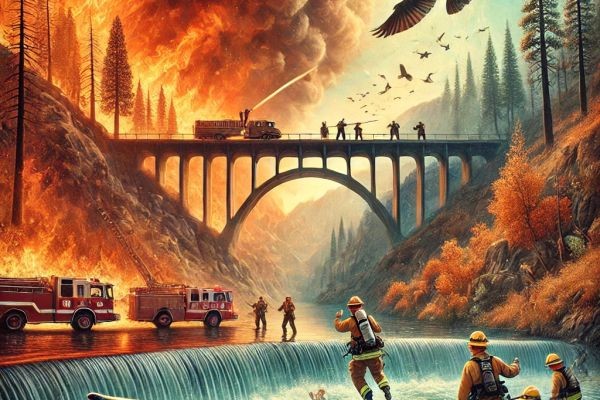Introduction
Los Angeles, a city famed for its sprawling landscapes and iconic skylines, has increasingly become synonymous with wildfires. Each year, thousands of acres are consumed by relentless flames, leaving behind trails of destruction and sparking fierce debates over budget cuts, environmental policies, and the city’s preparedness for these annual disasters. But the question remains: how can policymakers better protect lives and property while balancing ecological and fiscal responsibilities?
The Context: Budget Cuts and Wildfire Readiness
In the 2024-2025 fiscal year, Mayor Karen Bass reduced the Los Angeles Fire Department’s (LAFD) budget by $17.6 million, cutting it from $837.2 million to $819.64 million (ABC7 Chicago). The cuts primarily targeted administrative costs and overtime pay but sparked concerns about the city’s ability to manage large-scale emergencies.
The consequences have been significant. During the Palisades Fire, firefighters struggled with limited resources and long shifts. Critics argue that even small reductions in funding can have far-reaching impacts when emergencies occur (NY Post).
The Environmental Dilemma: Saving Ecosystems vs. Saving Lives
Governor Gavin Newsom recently endorsed the removal of dams along the Klamath River to restore salmon populations and honor agreements with Indigenous tribes (California Governor’s Office). While this decision is a win for ecological restoration, it has resulted in reduced water reserves critical for firefighting efforts. With wildfires becoming more frequent and intense, these policies have sparked debates about the balance between preserving wildlife and protecting human life.
Former President Donald Trump criticized these measures, claiming the policies prioritize fish over human safety (NY Post). While hyperbolic, his comments reflect a sentiment shared by many Californians who demand that the state reevaluate its priorities.
Proposed Solutions: A Road Map to Lower Fire Risks
1.Restoring Firefighter Funding with Accountability
Local governments should restore essential LAFD funding and earmark it specifically for wildfire mitigation. Transparency measures, such as public oversight committees, can ensure funds are spent effectively.
2.Proactive Fire Mitigation Strategies
•Increase controlled burns to manage fuel loads in high-risk areas.
•Mandate fire-resistant building materials in urban-wildland interfaces.
•Expand defensible space requirements around homes and neighborhoods.
3.Water Conservation and Dual-Use Dams
Environmental policies must evolve to balance ecological needs with fire safety. California should explore dual-use dam systems that store water for firefighting while allowing regulated flows to support ecosystems. Public-private partnerships can help fund these initiatives.
4.Harnessing Technology
•Implement advanced satellite monitoring systems for early wildfire detection.
•Use AI-driven models to predict fire spread and allocate resources preemptively.
•Invest in drone fleets for real-time surveillance and rapid response.
5.Community Education and Involvement
Engaging local communities in fire prevention can significantly reduce risks. Awareness campaigns and incentives for creating defensible spaces can empower residents to protect their homes and neighborhoods.
6.Policy Collaboration for Balanced Environmental Action
California should convene task forces comprising environmental scientists, tribal leaders, firefighters, and urban planners to draft balanced policies that consider ecological preservation alongside public safety.
Conclusion: Planning for a Resilient Future
Los Angeles’ wildfire problem is a product of complex, interwoven factors: climate change, urban sprawl, budget constraints, and environmental policies. There are no quick fixes, but through thoughtful planning, collaboration, and decisive action, the city can significantly reduce wildfire risks.
Policymakers must recognize that this isn’t just about saving money or protecting salmon—it’s about ensuring that both people and nature can thrive in a shared future. Los Angeles has the opportunity to lead the nation in crafting innovative solutions to one of our most pressing crises. It’s time to seize that opportunity before the flames take even more.
Sources
•“Los Angeles cut $17.6M from fire department budget months before Palisades Fire,” ABC7 Chicago.
•“Fire Chief warned budget cuts would impact wildfire efforts,” NY Post.
•“Klamath River Dams removed to restore salmon habitats,” California Governor’s Office.
•“Governor Newsom criticized for environmental policies during wildfires,” NY Post.








